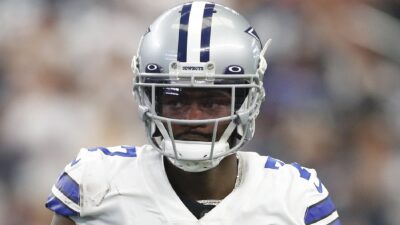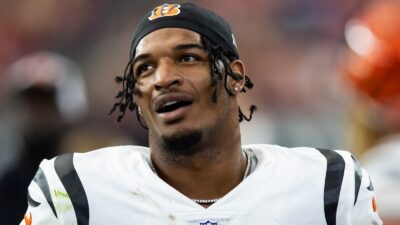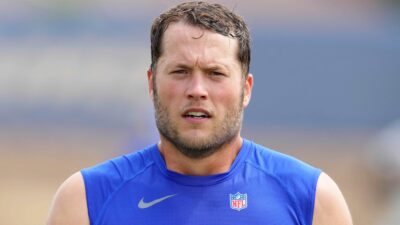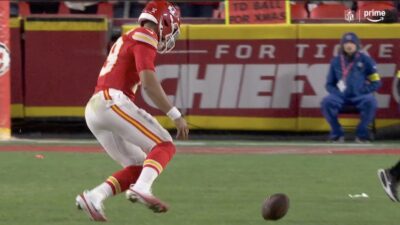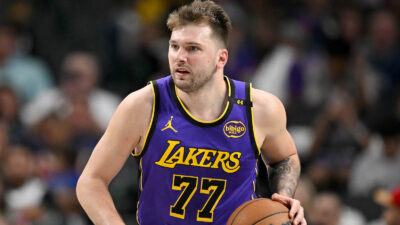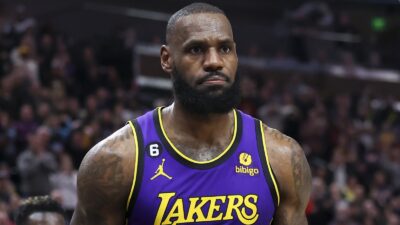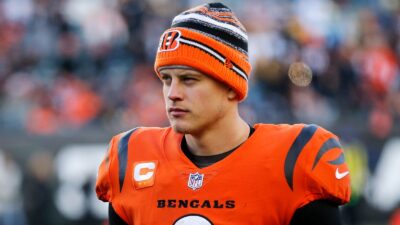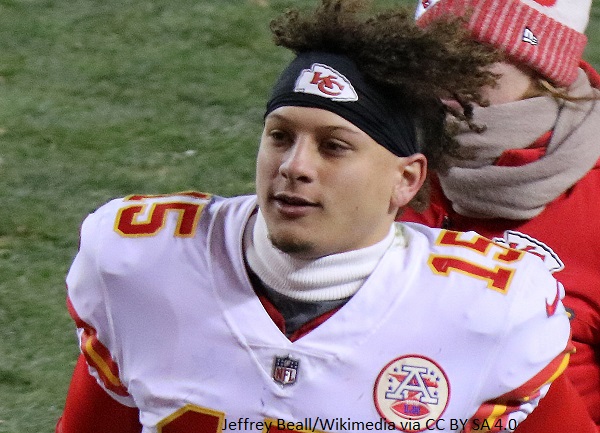
Every year there are NFL players who progress in their development and sometimes take the league by storm. On the opposite end, there are players who regress.
Regression doesn’t necessarily mean there’s a diminishing talent, but rather, it could be a product of a variety of factors. There could be coaching staff changes, scheme changes, a decreased role or any number of things contributing to regression. Sometimes it’s all of the above, and sometimes it really is just time to call it a career.
Here’s a look at 10 NFL players who could, for one reason or another, regress in 2019.
10. Russell Wilson, QB, Seattle Seahawks
After a wildly impressive 2018 campaign in which he tossed 35 touchdowns at a rate of 8.2 percent, it would be hard to imagine Wilson falling off a cliff. However, when considering that the aforementioned 8.2 percent touchdown rate was the seventh-highest in NFL history, it’s unlikely Wilson is capable of repeating or improving upon that number. And despite the added presence of rookie second-round pick D.K. Metcalf, the Seahawks don’t exactly boast an impressive cast at wide receiver or tight end, so it stands to reason that Wilson will regress simply because his career-best performance in 2018 is unsustainable.
9. Danny Amendola, WR, Detroit Lions
The moment Amendola left New England it was inevitable that his career decline had begun. And that’s not necessarily a knock on Amendola, but more a testament to Tom Brady, Bill Belichick and the Patriots’ remarkable way of ensuring receiver produces at a solid clip. In Miami, Amendola took an immediate step backwards. Now with his third team, third quarterback, third coach, and third system in three years, Amendola faces an uphill battle, especially considering that Kenny Golladay and Marvin Jones will likely be the featured receivers.
8. Dee Ford, DL, San Francisco 49ers
Ford was a dominant outside linebacker in Kansas City, but that’s not going to be his role in San Francisco. Rather, Ford will now begin to play with his hand in the dirt a bit more as he adapts to a outside linebacker/defensive end hybrid role. And while both he and the team will dismiss the positional change, Ford will have to learn new concepts, different approaches to offensive linemen, and different angles upon engagement. There will be a learning curve, even for someone as football-savvy as Ford, which will undoubtedly hinder his sack totals — at least early on — likely preventing him from reaching double digits. And that’s assuming Ford can stay healthy enough to start all 16 games — something he’s only done once in his career.
7. Ben Roethlisberger, QB, Pittsburgh Steelers
Forget that Roethlisberger is 37 years of age. That itself signals an eventual downturn, but with the departure of wide receiver Antonio Brown, Big Ben loses a player who accounted for 39 percent of his touchdown passes over the past six seasons. As consistent as Roethlisberger has been — when he’s able to stay on the field — much of that was influenced by the consistency around him. Now without Brown and a second season without Le’Veon Bell, the Steelers need to rediscover who they are offensively, which is a tall order for an aging quarterback. And after putting up multiple career highs in 2018, there seems to be only one direction for Roethlisberger to go — down.
6. Phillip Lindsay, RB, Denver Broncos
Lindsay had one of the best seasons for an undrafted rookie running back in league history, but even before a serious wrist injury cut his debut campaign short, there were signs that the league was catching up. After eclipsing 60 yards on the ground in 10 of his first 12 games, including six straight games from Week 7 to Week 12, Lindsay gained just 100 yards on 38 carries (2.63 ypc) over his final three games. Over that same span, Lindsay also saw his catch rate and yards per reception drop substantially. Now entering his second season, Lindsay will not only have to return from injury, but will have to readjust to a league that had caught up with him.
5. Landon Collins, S, Washington Redskins
Collins has been on a steady decline since his Defensive Player of the Year-worthy performance in 2016, slipping to such a degree that the Giants let him walk out of the building without so much as parting, “good luck!” And while his contract in Washington would indicate a high level of expectation, the reality is that Collins is a one-dimensional box safety who is a tremendous liability in coverage and struggles to stay on the field. Now in a new system on a new team and representing a new city, Collins carries the weight of those expectations on his shoulders, but has demonstrated an inability to move beyond his time with the Giants. There are red flags everywhere, and while the investment may pan out for the Redskins long term, it could take a year or two before the fit becomes snug.
4. Antonio Brown, WR, Oakland Raiders
Brown spent nine years thriving in a Pittsburgh offense in which he was the aerial focal point for Ben Roethlisberger, but that relationship has ended in an ugly and rather strange divorce. So rather than entering 2019 in a somewhat stable environment, Brown will attempt to operate in perhaps one of the most dysfunctional environments in all of football — and with a quarterback who many would argue is not on Big Ben’s level. Add in the presence of Tyrell Williams, who may very well be a better all-around fit for the Raiders’ offense, and it’s hard to imagine a soon-to-be 31-year-old Brown producing at the same clip we’re accustomed to.
3. Eric Ebron, TE, Indianapolis Colts
Ebron erupted in 2018, leading many to argue his early career struggles were merely situational. And while a portion of that argument may be true, it’s hard to ignore the fact that Ebron over-performed at a remarkable clip last season. His 13 touchdowns came while playing 55.9 percent of the Colts’ offensive snaps, which is a pace that even Hall of Fame tight ends couldn’t keep up. Part of the reason for that were injuries at the position, which thrust Ebron into a starring role. However, when Jack Doyle actually played, he out-targeted Ebron and had a substantially higher snap rate, not to mention the stolen red zone targets. All of that adds up to a statistical regression for Ebron in 2019.
2. Odell Beckham Jr., WR, Cleveland Browns
Many believe Beckham will explode playing with a quarterback other than Eli Manning, but the reality is that OBJ goes from being an offensive focal point to just another talented player on a team that features countless good players. Not only will Beckham’s targets undoubtedly drop in Cleveland, but there’s also the lingering reality that he just can’t stay healthy. Over his five-year career, Beckham has appeared in a full 16 games just once, leading to inconsistency. Additionally, Beckham now has to learn a new offensive system, adjust to a new quarterback and compete with other talented, game-changing stars for touches. He’ll look like the same superstar we know when the ball is in his hands, but odds are there just won’t be enough chances for him to maintain his per-game averages.
1. Patrick Mahomes, QB, Kansas City Chiefs
Some will likely scoff at the idea of Mahomes regressing, but his placement on this list has more to do with the bar he’s set for himself than the notion that his talent will somehow deteriorate in 2019. Rather, this is a product of a torrid pace Mahomes can’t possibly keep up. He had a touchdown rate of 8.6 percent in 2018, which was the fourth-highest in NFL history and something unlikely to replicate. Only Peyton Manning has ever had a touchdown rate of 8 percent or higher in two different seasons, so that’s a steep mountain to climb for Mahomes. Add in the league’s experience with him and the tape that’s now populating coaches offices all over, and the odds favor a statistical regression for Mahomes this coming season.

